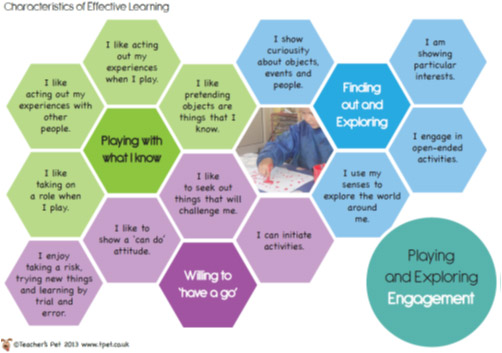
“Do ants sleep at night like us? Why is the sky brown? How do worms move if they don’t have legs? Do trees breathe? Where does the sun go at night? Where does rain come from? Can we sleep on clouds?” These are just a few examples of questions posed to EYFS staff by our curious three and four-year-olds.

Brainteasers such as these are often asked by very young children, and all of us will have our own memories of similar delightful and often original and unexpected examples of childhood curiosity. Although we may smile inwardly at the way in which these questions are phrased, we answer them with all the clarity and honesty that we can muster, as we recognise their importance to the child’s developing ability to notice, to understand and to reason. Their ability to notice what happens in the world around them is a key element in the development of the good thinking skills that they will need to become successful learners.
Learning to think critically may be one of the most important skills that today’s children will need for the future. In today’s changing world, children need to be able to do much more than repeat a list of facts; they need to be critical thinkers who can make sense of information, analyse, compare, contrast, make inferences, and generate higher order thinking skills.
All learning experiences within the EYFS classroom and playground, incorporates the three areas of ‘Characteristics of Learning’; Playing and Exploring (Engagement), Active Learning (Motivation) and Creating and Thinking Critically (Thinking skills).



The EYFS ‘Characteristics of Learning’ primary focus is on creative and critical thinking skills. As teachers and parents we need to give our children lots of opportunities to think, puzzle and work things out on their own and with others. At times in their development they will need a lot of scaffolding and support for their thinking, but at others they will need the opportunity to think for themselves – and that can be a little bit scary!
How to improve your child’s critical thinking skills at home?
There is no one strategy to support and teach your child how to think critically. As a parent, your role may sometimes be to ask open-ended questions to guide the thinking process. In other cases, it may be more appropriate to allow your child to experiment and refine their theories on what causes things to happen. Guiding your child’s critical thinking process can have a positive an impact on their problem-solving skills.
Here are some tips and ideas to help children build a foundation for critical thinking:
Provide opportunities for play
Testing how things work informally is crucial to developing critical thinking. It is during play that children explore cause and effect. What happens if I drop a spoon over and over again off the side of a high chair tray or roll two marbles down a chute at the same time? How can I get the block to balance on the top of this tower? By providing indoor and outdoor space for playing, along with time for pretend play, you provide open-ended opportunities for your child to try something and see the reaction; and then to try something else and see if he can create a different reaction. These hands-on experiences provide an integral foundation for later abstract critical thinking.
Pause and wait
Offering your child ample time to think, attempt a task, or generate a response is critical, but not necessarily easy to do. Try counting (silently) to 60 while your child is thinking, before intervening or speaking. This gives your child a chance to reflect on her response and perhaps refine, rather than responding with her very first gut reaction.
Don’t intervene immediately
Instead, try counting to 120, or even longer, and observe what your child is doing before stepping in. As challenging as it may be, avoid completing or doing the task for your child. For younger children, patiently readjusting and manoeuvring to grasp a toy on their own encourages continued problem solving and develops executive functioning skills. For older children, ask critical thinking questions and provide enough information so they don’t get frustrated, but not so much that you solve the problem for them.
Ask open-ended questions
Rather than automatically giving answers to the questions your child raises, help him think critically by asking questions in return: “What ideas do you have? What do you think is happening here?” Respect his responses whether you view them as correct or not. You could say, “That is interesting. Tell me why you think that.” Use phrases like “I am interested to hear your thinking about this.” “How would you solve this problem?” “Where do you think we might find more information to solve this problem?”
Help children develop hypotheses
Taking a moment to form hypotheses during play is a critical thinking exercise that helps develop skills. Try asking your child, “If we do this, what do you think will happen?” or “Let’s predict what we think will happen next.”
Encourage thinking in new and different ways
By allowing children to think differently, you’re helping them hone their creative problem-solving skills. Ask questions like, “What other ideas could we try?” or encourage your child to generate options by saying, “Let’s think of all the possible solutions.” Of course, there are situations where you as a parent need to step in. At these times, it is helpful to model your own critical thinking. As you work through a decision-making process, verbalise what is happening
inside your mind. Children learn from observing how you think. Taking time to allow your child to navigate problems is integral to developing your child’s critical thinking skills in the long run.
Alistair Bryce-Clegg – Best practice in the Early Years
Ellen Galinsky – Mind in the Making
Pamela May – The thinking child: Laying the foundations of understanding and competence
